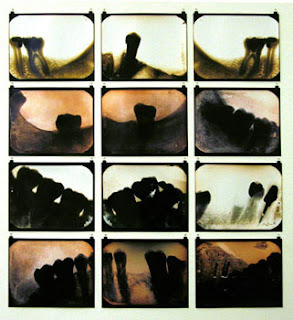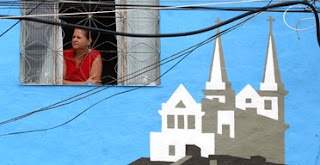THE DISAPPEARED (LOS DESAPARECIDOS) until 17.06. El Museo Del Barrio, NY

El Museo del Barrio, New York’s premier Latino and Latin American cultural institution, will present The Disappeared (Los Desaparecidos) from February 23 – June 17, 2007. This traveling exhibition, organized by the North Dakota Museum of Art and curated by Laurel Reuter, brings together visual artists’ responses to the tens of thousands of persons who were kidnapped, tortured, killed and “vanished” in Latin America by repressive right-wing military dictatorships during the late-1950s to the 1980s. The Disappeared (Los Desaparecidos) gathers 14 contemporary living artists from seven countries in Central and South America (Argentina, Brazil, Chile, Colombia, Guatemala, Uruguay and Venezuela), all of whose work contends with the horrors and violence stemming from the totalitarian regimes in each of their nations during the mid- to late-20th century. Some of the artists worked in the resistance; some had parents or siblings who were disappeared; others were forced into exile. The youngest were born into the aftermath of those dictatorships. And still others have lived in countries maimed by endless civil war. These artists whose work is represented in the exhibition are Marcelo Brodsky, Luis Camnitzer, Arturo Duclos, Juan Manuel Echavarría, Antonio Frasconi, Nicolás Guagnini, Nelson Leirner, Sara Maneiro, Cildo Meireles, Oscar Muñoz, Ivan Navarro, Luis González Palma, Ana Tiscornia and Fernando Traverso. Also included is a collaborative installation Identity/Identidad by a collective of 13 Argentinean artists. The range of visual languages -- drawings, prints, photographs, installations and mixed media -- incorporated in The Disappeared (Los Desaparecidos) frequently employs similar forms to evoke the presence of the missing person or persons. Bodies, faces, personal possessions and names, often methodically compiled and arranged, appear both boldly and subtly throughout the work in the exhibition. “Through their intense visual and emotional impact, these works communicate the unspeakable and reveal the artist’s assumed role of social responsibility towards ending the silence surrounding these extreme cases of human rights violations,” says Julián Zugazagoitia, Director of El Museo del Barrio. “In this context of public awareness and education through art, El Museo, as the only venue in the Eastern United States for this internationally traveling exhibition, aims to assemble as broad an audience as possible to confront and preserve the memory of these recent historical tragedies.”



